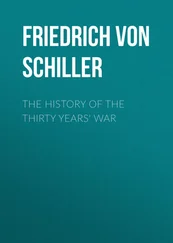For the accommodation of her fleet Japan possesses four well-equipped dockyards, capable not only of repairing damaged vessels of any class, but of constructing new ones; and this is, perhaps, the greatest advantage which the island kingdom has over Russia in the present struggle.
The naval strength of Russia in the Far East at the outbreak of hostilities is shown in the tabular statement appearing on page 44, which, again, does not include vessels of the smallest class nor the torpedo-boat flotilla.
It will be remarked that the Russian battleships offered a great variety in design and fighting power—a serious disadvantage, for in manœuvring the efficiency of the whole squadron sinks to the level of that of the least effective vessel it contains. The Czarevitch and the Retvisan , which were the latest vessels to arrive at Port Arthur, were also the most powerful members of the fleet. The former vessel was built in France after the latest French model, and the latter in Philadelphia. This fleet was divided, at the outbreak of war, between Port Arthur and Vladivostock, the four powerful cruisers, Gromoboi , Bogatyr , Rossia , and Rurik being stationed at the latter port.
While negotiations were still proceeding, though at a critical point, Russia prepared to send out very formidable reinforcements to the Far East from her Mediterranean Fleet. These reinforcements included the Osliabia , a battleship of over 12,000 tons displacement, with a speed of 19 knots; the Dmitri Donskoi , an armored cruiser of 6,000 tons displacement and a speed of 15 knots; the Aurora , a swift protected cruiser of the largest class; several cruisers of the volunteer fleet, with troops, naval drafts, and supplies; and a number of torpedo craft. This squadron had begun to assemble at Port Said before the outbreak of war, and the vessels at once began to pass through the Canal. But before they were ready to sail for the China seas, war broke out, and the departure was delayed. The initial Russian reverses at sea made it practically impossible for this reinforcing fleet to proceed to the seat of war, as it would have been liable to interception by the Japanese fleet in overwhelming strength. Accordingly, after cruising aimlessly about in the Red Sea for some weeks, the ships were ordered to return to the Baltic; and in the beginning of March they passed through the Suez Canal again on their way north.
RUSSIA'S AVAILABLE NAVY.
| BATTLESHIPS. |
|
|
|
|
Nominal |
Gun |
Weight of |
| Name |
Displacement |
I.H.P. |
Speed |
Protection |
Broadside Fire |
|
Tons |
|
Knots. |
In. |
Lbs. |
| Poltava |
10,950 |
11,200 |
17.0 |
10—5 |
3,367 |
| Petropavlovsk |
10,950 |
11,200 |
17.0 |
10—5 |
3,367 |
| Sevastopol |
10,950 |
11,200 |
17.0 |
10—5 |
3,367 |
| Peresviet |
12,674 |
14,500 |
19.0 |
10—5 |
2,672 |
| Pobieda |
12,674 |
14,500 |
19.0 |
10—5 |
2,672 |
| Retvisan |
12,700 |
16,000 |
18.0 |
10—5 |
3,434 |
| Czarevitch |
13,100 |
16,300 |
18.0 |
11—6-3/4 |
3,516 |
|
| ARMORED CRUISERS. |
|
|
|
|
Nominal |
Gun |
Weight of |
| Name |
Displacement |
I.H.P. |
Speed |
Protection |
Broadside Fire |
|
Tons |
|
Knots. |
In. |
Lbs. |
| Bogatyr |
6,750 |
19,500 |
23.0 |
5—4 |
872 |
| Askold |
6,500 |
9,500 |
23.0 |
— |
772 |
| Varyag |
6,500 |
20,000 |
23.0 |
5 |
510 |
| Diana |
6,630 |
11,600 |
20.0 |
4-1/2 |
632 |
| Pallada |
6,630 |
11,600 |
20.0 |
4-1/2 |
632 |
| Boyarin |
3,200 |
11,500 |
22.0 |
— |
180 |
| Novik |
3,000 |
18,000 |
25.0 |
— |
180 |
|
| ARMORED CRUISERS. |
|
|
|
|
Nominal |
Gun |
Weight of |
| Name |
Displacement |
I.H.P. |
Speed |
Protection |
Broadside Fire |
|
Tons |
|
Knots. |
In. |
Lbs. |
| Gromoboi |
12,336 |
18,000 |
20.0 |
6—3/4 |
1,197 |
| Bayan |
7,800 |
17,000 |
22.0 |
7—3 |
952 |
| Rossia |
12,200 |
18,000 |
20.0 |
2 |
1,348 |
| Rurik |
10,940 |
3,500 |
18.0 |
3 |
1,345 |
Though nominally the fleets of the two Powers were fairly equal, Japan possessed several very considerable advantages which, in the opinion of experts, changed that paper equality to marked superiority on her side. In the first place, the Chino-Japanese war only ten years ago had given her naval officers and men an invaluable experience of fighting on the grand scale under modern conditions; in the next place, their fleet was much more of a pattern; and in the third place it was operating from a base fully capable of providing all the needs and reinforcements entailed by losses in war, including a ready coal supply.
Russia, on the other hand, had for its only bases Port Arthur and Vladivostock, the one inadequate to the multifarious needs of her fleet, and the other ice-bound in winter, and so situated geographically as to be completely isolated from what promised to be the main scene of operations. Although Port Arthur had been rendered almost impregnable as a fortress, the Russians had not had time to complete it as a naval dockyard, and at the outbreak of war it possessed only one dry dock, and that not capable of accommodating vessels of the largest size. At Vladivostock the channel out of the harbor could only be kept free by ice-breakers. In the event of naval disasters, Russia, therefore, had no possibility of repairing her lame ducks, while the radius of her fleet's activity was limited by the fact that her only supplies of coal were to be obtained at Port Arthur. In the situation, therefore, which presented itself at the outbreak of war, this powerful naval force was practically deprived of mobility. It could not leave Port Arthur for more than a short cruise; and while it remained there it must be specially vulnerable to attack, lying in an open roadstead and huddled together in order to enjoy the protection of the guns of the fortress.
With regard to the land forces of the two belligerent Powers, it was only possible to reckon with certainty those of Japan; for it remained doubtful, until the progress of active operations revealed the facts, how much of Russia's enormous military strength had been concentrated in the Far East. Broadly speaking, Japan could put into the field in the last resort an army of between 400,000 and 450,000 men. The standing army amounts to almost 200,000 men, and it was immediately available for mobilization. To this number another 35,000 men was added by the reserve, while the militia of all arms could be reckoned at 200,000 men. The Japanese infantry soldier is armed with the Midji magazine rifle, and the artillery with the Arisaka quick-firing gun; but the adoption of this latter weapon has been so recent that the whole of the artillery is not yet supplied with it, and in this one respect at least the Russian gunners are believed to possess a very great advantage. The Japanese army has been organized largely on German models. It proved its efficiency as a fighting machine in the Chino-Japanese War; while the Japanese troops that took part in the relief of the Peking Legations earned the unstinted praise of all the military experts who watched their behavior. Until the present war, however, the Japanese army had never undergone the supreme ordeal of facing a European adversary.
Читать дальше












